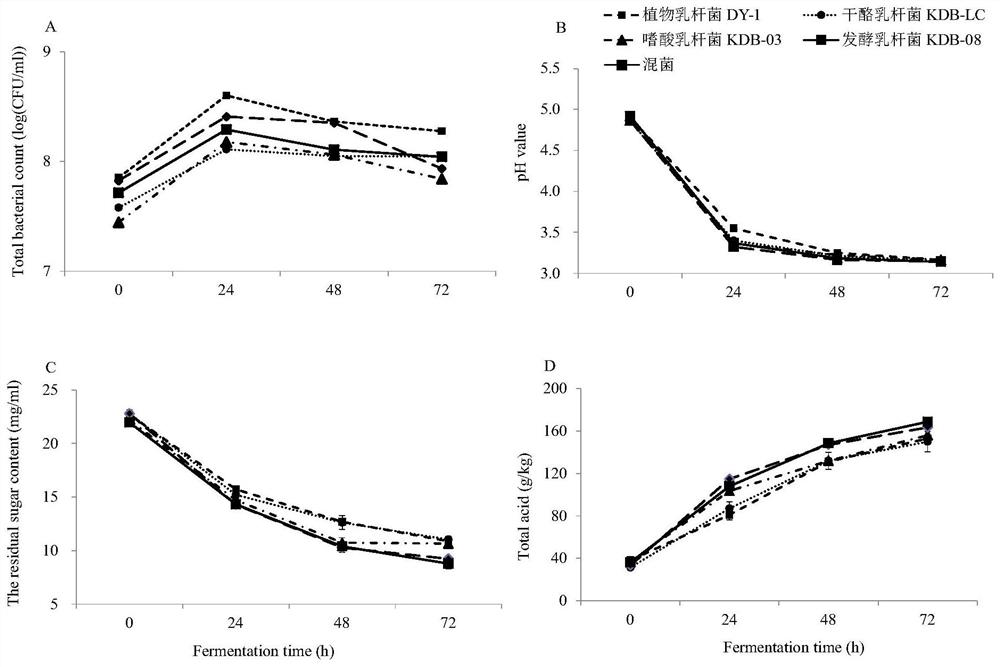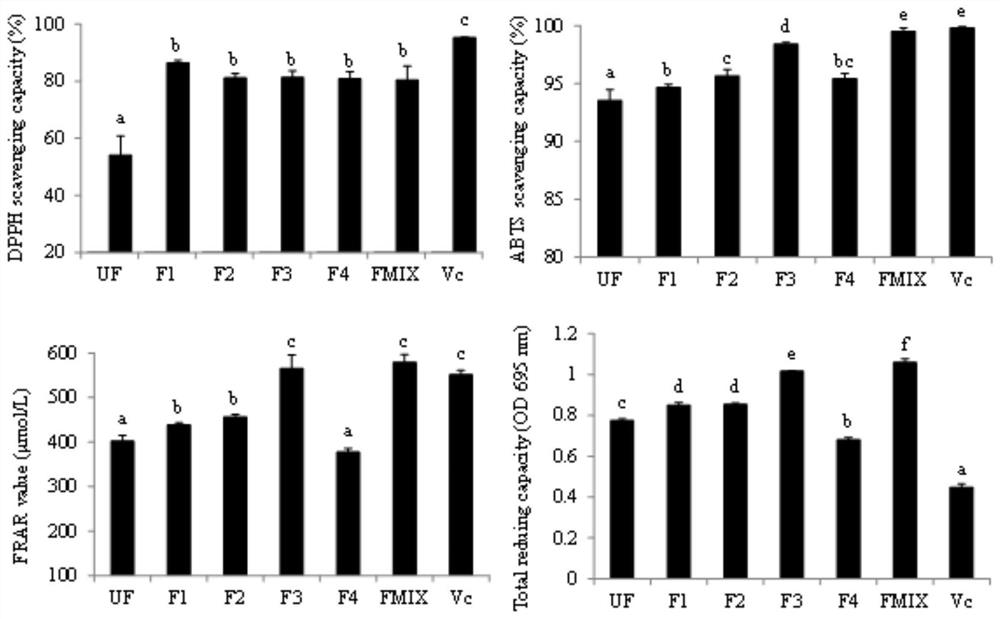Method for improving antioxidant activity of Withania Somnifera extract through probiotic fermentation
An anti-oxidant activity, ashwagandha technology, applied in the field of anti-oxidative activity of ashwagandha extract, to achieve the effect of enriching product forms and broadening application forms
- Summary
- Abstract
- Description
- Claims
- Application Information
AI Technical Summary
Problems solved by technology
Method used
Image
Examples
Embodiment 1
[0026] The specific steps of lactic acid bacteria fermenting Ashwagandha extract are as follows:
[0027] (1) Take 2 g of spray-dried ashwagandha extract powder, 2.5 g of glucose, 1.25 g of peptone, and 100 mL of distilled water; mix well, sterilize at 115°C for 15 min, and cool for later use;
[0028] Ashwagandha extract preparation: take ashwagandha root powder, grind it to a particle size of 70-350 μm, add water at a ratio of 1:12 (mass to volume ratio) of solid to liquid, and use ultrasonic extraction to obtain ashwagandha Solanum extract liquid; then convert the extract liquid into powder by spray drying;
[0029] (2) Take Lactobacillus plantarum ( L. plantarum ), Lactobacillus casei ( L.
[0030] casei), Lactobacillus fermentum ( L. fermentum ), Lactobacillus acidophilus ( L. acidophilus ) for activation, subcultured twice, and then enlarged and cultured in an incubator, wherein the culture temperature of Lactobacillus plantarum, Lactobacillus casei, and Lactob...
Embodiment 2
[0033] Whether ashwagandha extract has inhibitory effect on lactic acid bacteria, the specific experiment is as follows:
[0034] Lactic acid bacteria were inoculated in the solution containing ashwagandha extract, and the effect of ashwagandha extract on the growth of lactic acid bacteria was evaluated by the bacterial count and other metabolic indicators in different fermentation periods. Each lactic acid bacteria and combination were inoculated in the matrix of 2% ashwagandha extract, and the bacteria amount, residual sugar, pH and total acid were measured at different fermentation times (0 h, 24 h, 48 h, 72 h). To determine the effect of ashwagandha extract on the growth of lactic acid bacteria.
[0035] From attached figure 1 It can be seen that lactic acid bacteria can proliferate and grow in the medium containing the ashwagandha extract, and carry out normal metabolic activities, indicating that the ashwagandha extract has no inhibitory effect on lactic acid bacteria....
Embodiment 3
[0037] Detect the change of the total flavonoids and total phenols of the extract in Example 1 before and after fermentation; the specific detection method is as follows:
[0038] (1) Determination of total flavonoid content
[0039]The sodium nitrite-aluminum nitrate method was used. Add 3.0 mL of fermented broth (diluted 5 times) with different treatments to a 25 mL colorimetric tube, then add 1 mL of sodium nitrite (5%, w / v), mix thoroughly and let stand for 5 min, then add 1 Add 10 mL of aluminum trichloride (10%, w / v), mix well and bathe in water at 25°C for 6 min, add 10 mL of sodium hydroxide solution (1 mol / L), and finally make up distilled water to 25 mL, mix well and place for 15 min. The absorbance value was measured at 510 nm, and the standard curve was made with rutin as the standard. The total flavonoid content in the fermentation broth of different treatments was expressed in μg (rutin equivalent, RE) / mL.
[0040] (2) Determination of total phenol content
...
PUM
| Property | Measurement | Unit |
|---|---|---|
| particle diameter | aaaaa | aaaaa |
Abstract
Description
Claims
Application Information
 Login to View More
Login to View More - R&D Engineer
- R&D Manager
- IP Professional
- Industry Leading Data Capabilities
- Powerful AI technology
- Patent DNA Extraction
Browse by: Latest US Patents, China's latest patents, Technical Efficacy Thesaurus, Application Domain, Technology Topic, Popular Technical Reports.
© 2024 PatSnap. All rights reserved.Legal|Privacy policy|Modern Slavery Act Transparency Statement|Sitemap|About US| Contact US: help@patsnap.com










